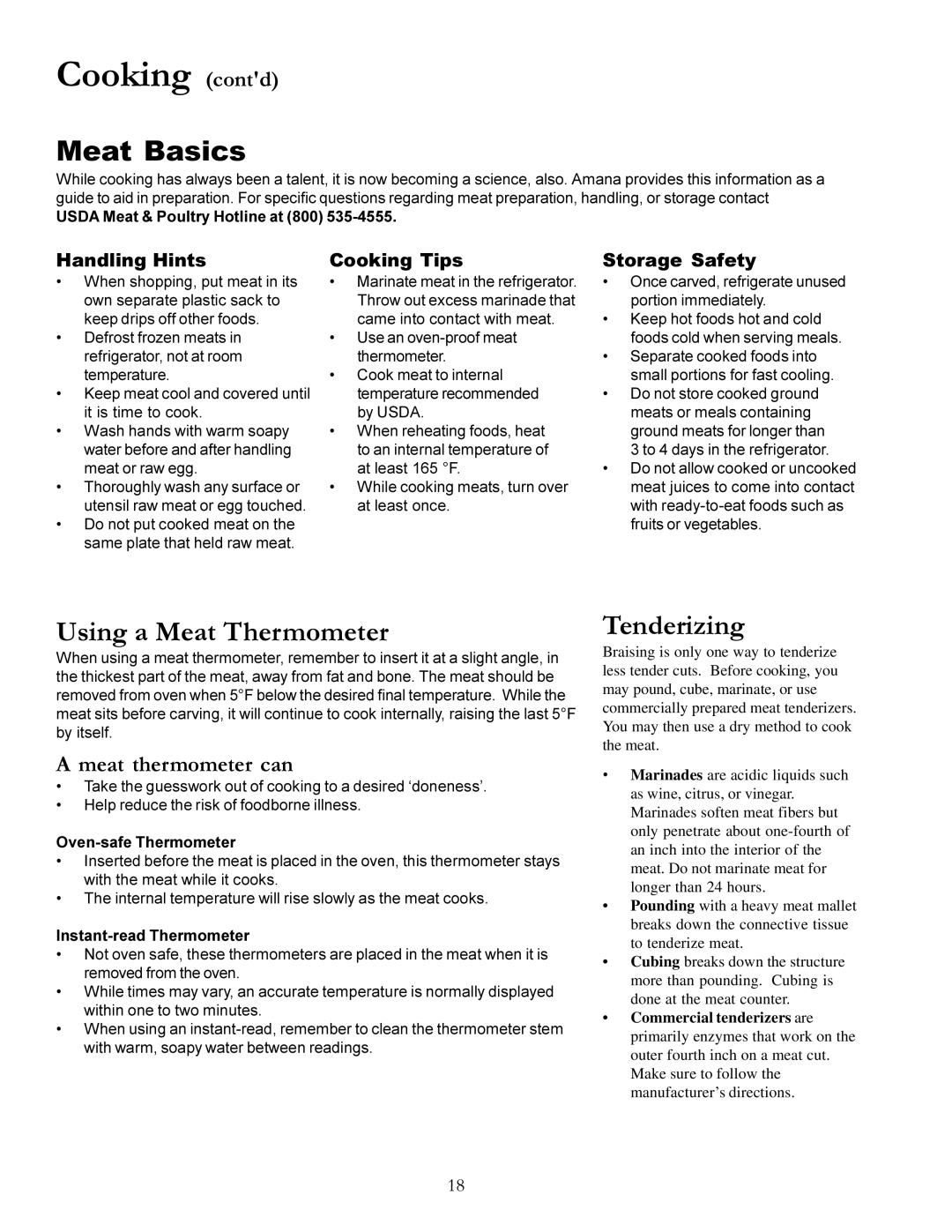ACS7280A, ACS7270A specifications
The Amana ACS7270A and ACS7280A are two advanced air conditioning systems designed to provide exceptional cooling performance and energy efficiency for residential and commercial use. These models feature cutting-edge technology and innovative design, making them popular choices among homeowners and business owners looking to enhance indoor comfort.One of the standout features of both the ACS7270A and ACS7280A is their high-efficiency SEER (Seasonal Energy Efficiency Ratio) ratings. With energy efficiency ratings often exceeding 16 SEER, these units not only reduce energy costs but also promote environmental sustainability by decreasing energy consumption. This efficiency is achieved through a combination of high-quality components and advanced engineering.
The units are equipped with a variable-speed compressor, which allows for precise temperature control and improved humidity management. This technology enables the system to operate at different speeds based on the cooling demand, ensuring that the air conditioner runs only as hard as needed. As a result, users can enjoy quieter operation and enhanced comfort, as the system adjusts dynamically to maintain the desired indoor climate.
Another impressive feature is the incorporation of smart technology. Both models can be connected to Wi-Fi, allowing users to control their cooling settings remotely through a smartphone app. This connectivity includes the ability to set schedules, monitor energy usage, and receive maintenance alerts, providing convenience and peace of mind.
Durability and serviceability are also key characteristics of the ACS7270A and ACS7280A. Constructed with robust materials, these units are designed to withstand various environmental conditions. Additionally, they come with a comprehensive warranty, ensuring that customers are protected for years to come.
Installation and maintenance have been simplified in these models. They feature an easily accessible service panel, making routine maintenance tasks straightforward and convenient for technicians. Moreover, their compact design allows for flexible installation options, adapting seamlessly to different spaces.
In summary, the Amana ACS7270A and ACS7280A air conditioning systems stand out in the market for their efficiency, advanced technology, and user-friendly features. With a focus on comfort, cost savings, and reliability, these units are an excellent choice for anyone looking to invest in a modern cooling solution.
